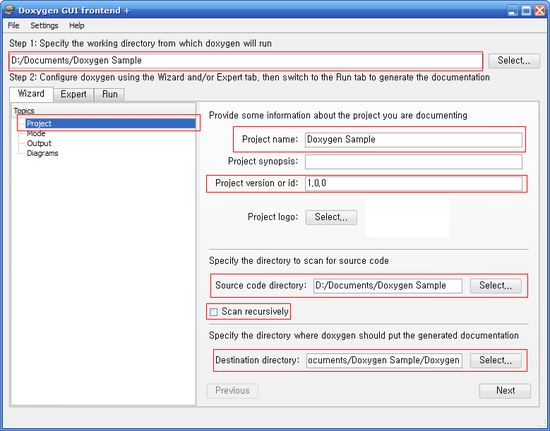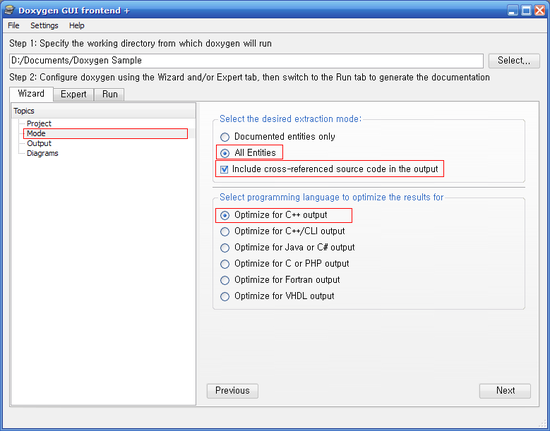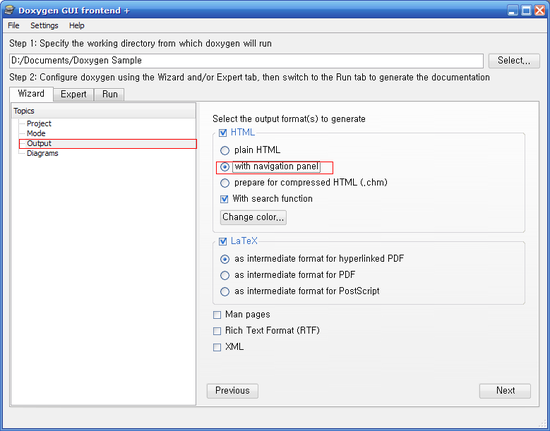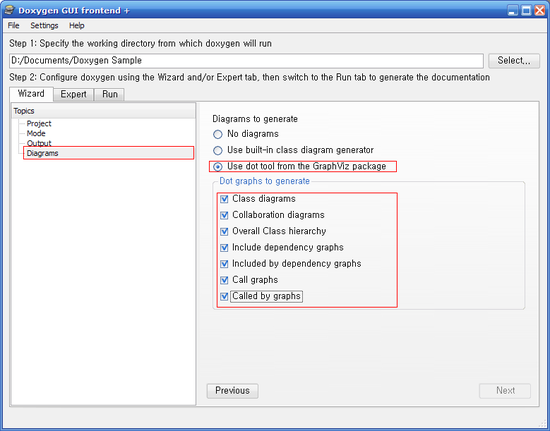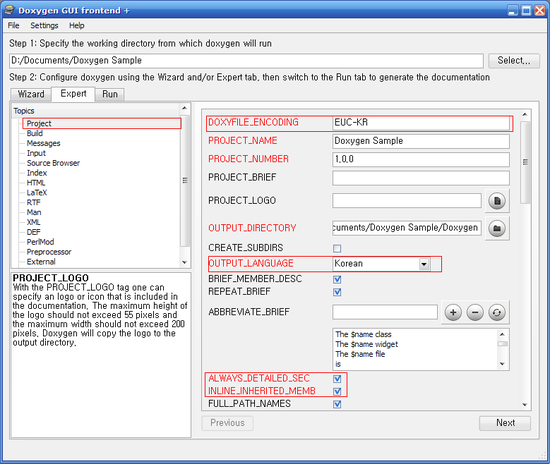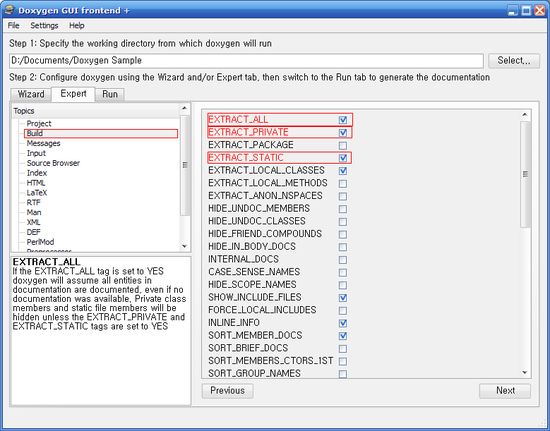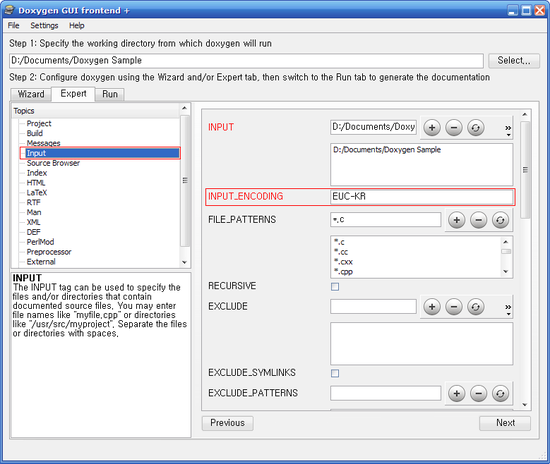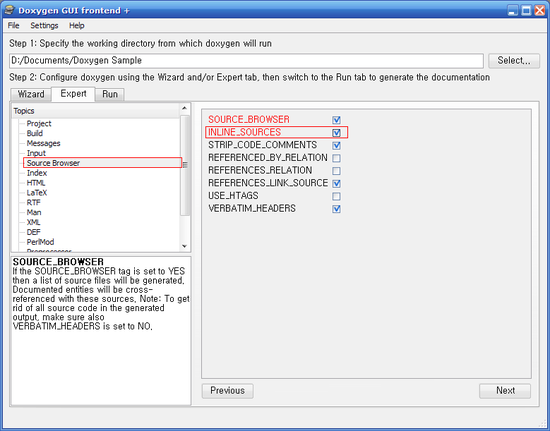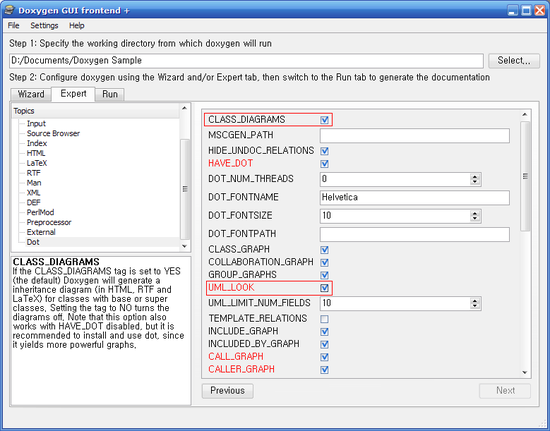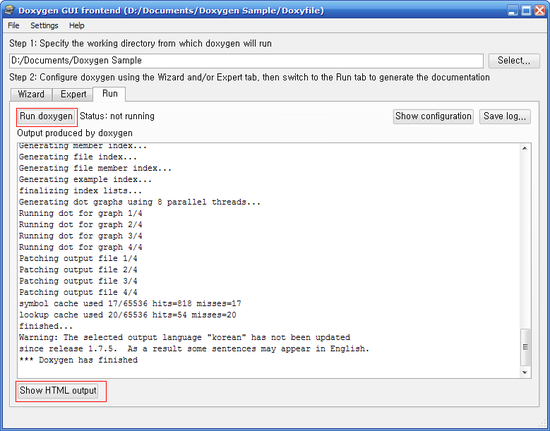01 시작
The dependencies
page lists all the jars that you will need to have in your
classpath.
The class
com.gargoylesoftware.htmlunit.WebClient is the main starting point. This
simulates a web browser and will be used to execute all of the tests.
Most unit testing
will be done within a framework like JUnit so
all the examples here will assume that we are using that.
In the first
sample, we create the web client and have it load the homepage from the
HtmlUnit website. We then verify that this page has the correct title. Note
that getPage() can return different types of pages based on the content type of
the returned data. In this case we are expecting a content type of text/html so
we cast the result to an com.gargoylesoftware.htmlunit.html.HtmlPage.
@Test
public void homePage() throws Exception {
final WebClient webClient = new WebClient();
final
HtmlPage page = webClient.getPage("http://htmlunit.sourceforge.net");
Assert.assertEquals("HtmlUnit - Welcome to HtmlUnit",
page.getTitleText());
final String pageAsXml = page.asXml();
Assert.assertTrue(pageAsXml.contains("<body class=\"composite\">"));
final String pageAsText = page.asText();
Assert.assertTrue(pageAsText.contains("Support for the HTTP and
HTTPS protocols"));
webClient.closeAllWindows();
}
Often you will
want to simulate a specific browser. This is done by passing a
com.gargoylesoftware.htmlunit.BrowserVersion into the WebClient constructor.
Constants have been provided for some common browsers but you can create your
own specific version by instantiating a BrowserVersion.
@Test
public void homePage_Firefox() throws
Exception {
final WebClient webClient = new WebClient(BrowserVersion.FIREFOX_17);
final HtmlPage page =
webClient.getPage("http://htmlunit.sourceforge.net");
Assert.assertEquals("HtmlUnit - Welcome to HtmlUnit",
page.getTitleText());
webClient.closeAllWindows();
}
Specifying this
BrowserVersion will change the user agent header that is sent up to the server
and will change the behavior of some of the JavaScript.
Once you have a reference
to an HtmlPage, you can search for a specific HtmlElement by one of 'get'
methods, or by using XPath.
Below is an
example of finding a 'div' by an ID, and getting an anchor by name:
@Test
public void getElements() throws Exception {
final WebClient webClient = new WebClient();
final HtmlPage page = webClient.getPage("http://some_url");
final HtmlDivision div =
page.getHtmlElementById("some_div_id");
final HtmlAnchor anchor = page.getAnchorByName("anchor_name");
webClient.closeAllWindows();
}
XPath is the
suggested way for more complex searches, a brief tutorial can be found in W3Schools
@Test
public void xpath() throws Exception {
final WebClient webClient = new WebClient();
final HtmlPage page =
webClient.getPage("http://htmlunit.sourceforge.net");
//get list of all divs
final List<?> divs = page.getByXPath("//div");
//get div which has a 'name' attribute of 'John'
final HtmlDivision div = (HtmlDivision)
page.getByXPath("//div[@name='John']").get(0);
webClient.closeAllWindows();
}
The last WebClient
constructor allows you to specify proxy server information in those cases where
you need to connect through one.
@Test
public void homePage_proxy() throws Exception
{
final WebClient webClient = new WebClient(BrowserVersion.FIREFOX_10,
"http://myproxyserver", myProxyPort);
//set proxy username and password
final DefaultCredentialsProvider credentialsProvider = (DefaultCredentialsProvider)
webClient.getCredentialsProvider();
credentialsProvider.addCredentials("username",
"password");
final HtmlPage page =
webClient.getPage("http://htmlunit.sourceforge.net");
Assert.assertEquals("HtmlUnit - Welcome to HtmlUnit",
page.getTitleText());
webClient.closeAllWindows();
}
Specifying this
BrowserVersion will change the user agent header that is sent up to the server
and will change the behavior of some of the JavaScript.
Frequently we want
to change values in a form and submit the form back to the server. The
following example shows how you might do this.
@Test
public void submittingForm() throws Exception
{
final WebClient webClient = new WebClient();
//
Get the first page
final HtmlPage page1 = webClient.getPage("http://some_url");
//
Get the form that we are dealing with and within that form,
//
find the submit button and the field that we want to change.
final HtmlForm form = page1.getFormByName("myform");
final
HtmlSubmitInput button = form.getInputByName("submitbutton");
final HtmlTextInput textField = form.getInputByName("userid");
//
Change the value of the text field
textField.setValueAttribute("root");
//
Now submit the form by clicking the button and get back the second page.
final HtmlPage page2 = button.click();
webClient.closeAllWindows();
}
02 키보드 사용
For a given WebClient, the
focus can be on at most one element at any given time. Focus doesn't have to be
on any element within the WebClient.
There are several ways to move
the focus from one element to another. The simplest is to call HtmlPage.setFocusedElement(HtmlElement).
This method will remove focus from whatever element currently has it, if any,
and will set it to the new component. Along the way, it will fire off any
"onfocus" and "onblur" handlers that have been defined.
The element currently owning
the focus can be determined with a call to HtmlPage.getFocusedElement().
To simulate keyboard navigation
via the tab key, you can call HtmlPage.tabToNextElement() and
HtmlPage.tabToPreviousElement() to cycle forward or backwards through the defined
tab order. This tab order is defined by the tabindex attribute
on the various elements as defined by the HTML specification. You can query the
defined tab order with the method HtmlPage.getTabbableElements() which will
return a list of all tabbable elements in defined tab order.
Access keys, often called
keyboard mnemonics, can be simulated with the method
HtmlPage.pressAccessKey(char).
To use special keys, you can
use htmlElement.type(int) with KeyboardEvent.DOM_VK_PAGE_DOWN.
Finally, there is an assertion
for testing that will verify that every tabbable element has a defined tabindex
attribute. This is done with WebAssert.assertAllTabIndexAttributesSet().
03 테이블 사용
The first set of
examples will use this simple html.
<html><head><title>Table
sample</title></head><body>
<table id="table1">
<tr>
<th>Number</th>
<th>Description</th>
</tr>
<tr>
<td>5</td>
<td>Bicycle</td>
</tr>
</table>
</body></html>
This example shows
how to iterate over all the rows and cells
final HtmlTable table =
page.getHtmlElementById("table1");
for (final HtmlTableRow row :
table.getRows()) {
System.out.println("Found row");
for
(final HtmlTableCell cell : row.getCells()) {
System.out.println(" Found
cell: " + cell.asText());
}
}
The following
sample shows how to access specific cells by row and column
final WebClient webClient = new WebClient();
final HtmlPage page =
webClient.getPage("http://foo.com");
final HtmlTable table =
page.getHtmlElementById("table1");
System.out.println("Cell (1,2)=" +
table.getCellAt(1,2));
The next examples
will use a more complicated table that includes table header, footer and body
sections as well as a caption
<html><head><title>Table
sample</title></head><body>
<table id="table1">
<caption>My complex table</caption>
<thead>
<tr>
<th>Number</th>
<th>Description</th>
</tr>
</thead>
<tfoot>
<tr>
<td>7</td>
<td></td>
</tr>
</tfoot>
<tbody>
<tr>
<td>5</td>
<td>Bicycle</td>
</tr>
</tbody>
<tbody>
<tr>
<td>2</td>
<td>Tricycle</td>
</tr>
</tbody>
</table>
</body></html>
HtmlTableHeader,
HtmlTableFooter and HtmlTableBody sections are groupings of rows. There can be
at most one header and one footer but there may be more than one body. Each one
of these contains rows which can be accessed via getRows()
final HtmlTableHeader header =
table.getHeader();
final List<HtmlTableRow> headerRows =
header.getRows();
final HtmlTableFooter footer =
table.getFooter();
final List<HtmlTableRow> footerRows =
footer.getRows();
for (final HtmlTableBody body :
table.getBodies()) {
final List<HtmlTableRow> rows = body.getRows();
...
}
Every table may
optionally have a caption element which describes it.
final String caption = table.getCaptionText()
04 프레임(frame / iframe)사용
Getting the page inside <frame> element or <iframe>
element can be done by using HtmlPage.getFrames().
Suppose you have the following page:
<html>
<body>
<iframe src="two.html">
</body>
</html>
You can use the following code to get the content of two.html:
final List<FrameWindow> window = page.getFrames();
final HtmlPage pageTwo = (HtmlPage) window.get(0).getEnclosedPage();
Another example that navigates API docs to get a desired page of a
class:
final WebClient client = new WebClient();
final HtmlPage mainPage = client.getPage("http://htmlunit.sourceforge.net/apidocs/index.html");To get the page of the first frame (at upper left) and click the
sixth link:
final HtmlPage packageListPage = (HtmlPage) mainPage.getFrames().get(0).getEnclosedPage();
packageListPage.getAnchors().get(5).click();
To get the page of the frame named 'packageFrame' (at lower left)
and click the second link:
final HtmlPage pakcagePage = (HtmlPage) mainPage.getFrameByName("packageFrame").getEnclosedPage();pakcagePage.getAnchors().get(1).click();
To get the page of the frame named 'classFrame' (at right):
final HtmlPage classPage = (HtmlPage) mainPage.getFrameByName("classFrame").getEnclosedPage();
05 윈도우 사용
All pages are contained within WebWindow objects. This could be a
TopLevelWindow representing an actual browser window, an HtmlFrame representing
a <frame> element or an HtmlInlineFrame representing an <iframe>
element.
When a WebClient is first instantiated, a TopLevelWindow is
automatically created. You could think of this as being the first window
displayed by a web browser. Calling WebClient.getPage(WebWindow, WebRequest)
will load the new page into this window.
The JavaScript open() function can be used to load pages into
other windows. New WebWindow objects will be created automatically by this
function.
If you wish to be notified when windows are created or pages are
loaded, you need to register a WebWindowListener with the WebClient via the
method WebClient.addWebWindowListener(WebWindowListener)
When a window is opened either by JavaScript or through the
WebClient, a WebWindowEvent will be fired and passed into the
WebWindowListener.webWindowOpened(WebWindowEvent) method. Note that both the
new and old pages in the event will be null as the window does not have any
content loaded at this point. If a URL was specified during creation of the
window then the page will be loaded and another event will be fired as
described below.
When a new page is loaded into a specific window, a WebWindowEvent
will be fired and passed into the
WebWindowListener.webWindowContentChanged(WebWindowEvent) method.
06 JavaScript 사용
A frequent question we get is "how do I test my JavaScript?".
There is nothing really specific for using JavaScript, it is automatically
processed. So, you just need to .getPage(), find the element to click(), and
then check the result. Tests for complex JavaScript libraries are included in
HtmlUnit test base, you can find it here which is useful to get an idea.
Usually, you should wait() or sleep() a little, as HtmlUnit can
finish before the AJAX response is retrieved from the server, please read this FAQ.
Below are some examples:
Lets say that we have a page containing JavaScript that will
dynamically write content to the page. The following html will dynamically
generate five textfields and place them inside a table. Each textfield will
have a unique name created by appending the index to the string
"textfield".
<html><head><title>Table sample</title></head><body>
<form action='/foo' name='form1'>
<table id="table1">
<script type="text/javascript">
for (i = 1; i <= 5; i++) { document.write("<tr><td>" + i + "</td><td><input name='textfield" + i
+ "' type='text'></td></tr>");
}
</script>
</table></form>
</body></html>
We would likely want to test that the five text fields were
created so we could start with this.
@Test
public void documentWrite() throws Exception { final WebClient webClient = new WebClient();
final HtmlPage page = webClient.getPage("http://myserver/test.html"); final HtmlForm form = page.getFormByName("form1"); for (int i = 1; i <= 5; i++) { final String expectedName = "textfield" + i;
Assert.assertEquals(
"text",
form.<HtmlInput>getInputByName(expectedName).getTypeAttribute());
}
}
We might also want to check off-by-one errors by ensuring that it
didn't create "textfield0" or "textfield6". Trying to get
an element that doesn't exist will cause an exception to be thrown so we could
add this to the end of the previous test.
try { form.getInputByName("textfield0"); fail("Expected an ElementNotFoundException");}
catch (final ElementNotFoundException e) { // Expected path
}
try { form.getInputByName("textfield6"); fail("Expected an ElementNotFoundException");}
catch (final ElementNotFoundException e) { // Expected path
}
Often you want to watch alerts triggered by JavaScript.
<html><head><title>Alert sample</title></head>
<body onload='alert("foo");'></body></html>
Alerts are tracked by an AlertHandler which will be called
whenever the JavaScript alert() function is called. In the following test, we
register an alert handler which just saves all messages into a list. When the
page load is complete, we compare that list of collected alerts with another
list of expected alerts to ensure they are the same.
@Test
public void alerts() throws Exception { final WebClient webClient = new WebClient();
final List collectedAlerts = new ArrayList();
webClient.setAlertHandler(new CollectingAlertHandler(collectedAlerts));
// Since we aren't actually manipulating the page, we don't assign
// it to a variable - it's enough to know that it loaded.
webClient.getPage("http://tciludev01/test.html");
final List expectedAlerts = Collections.singletonList("foo"); Assert.assertEquals(expectedAlerts, collectedAlerts);
}
Handling prompt dialogs, confirm dialogs and status line messages
work in the same way as alerts. You register a handler of the appropriate type
and it will get notified when that method is called. See
WebClient.setPromptHandler(), WebClient.setConfirmHandler() and
WebClient.setStatusHandler() for details on these.
Most event handlers are already implemented: onload, onclick,
ondblclick, onmouseup, onsubmit, onreadystatechange, ... They will be triggered
at the appropriate time just like in a "real browser".
If the event that you wish to test is not yet supported then you
can directly invoke it through the ScriptEngine. Note that while the script
engine is publicly accessible, we do not recommend using it directly unless you
have no other choice. It is much better to manipulate the page as a user would
by clicking on elements and shifting the focus around.
07 ActiveX 사용
Although HtmlUnit is a pure Java implementation that simulates
browsers, there are some cases where platform-specific features require
integration of other libraries, and ActiveX is one of them.
Internet Explorer on Windows can run arbitrary ActiveX components
(provided that security level is lowered on purpose, if the user trusts the
website). Neither HtmlUnit nor Internet Explorer has any control on the
behavior of the run ActiveX, so you have to be careful before using that
feature.
The current implementation depends on Jacob, and because it has
.dll dependency, it was not uploaded to maven repository. The dependency is
optional, i.e. Jacob jar is not needed for compiling or usual usage of
HtmlUnit.
To use Jacob, add jacob.jar to the classpath and put the .dll in
the path (java.library.path) so that the following code works for you:
final ActiveXComponent activeXComponent = new ActiveXComponent("InternetExplorer.Application");final boolean busy = activeXComponent.getProperty("Busy").getBoolean();System.out.println(busy);
The only thing needed is setting WebClient property:
webClient.getOptions().setActiveXNative(true);
and there you go!
http://katselphrime.com/2014/03/16/vmrun/
http://bugtruck.blogspot.kr/2009/02/vmrun-vmware.html
http://www.vmware.com/kr/support-search.html?cc=www&client=VMware_Site_support_center&site=VMware_Site_support_center&cn=vmware&num=20&output=xml_no_dtd&ie=UTF-8&oe=UTF-8&q=Using+vmrun+to+Control+Virtual+Machines#client=VMware_Site_support_center&numgm=4&getfields=*&filter=0&site=VMware_Site_support_center&cc=en&ie=UTF-8&oe=UTF-8&start=0&num=20&cid=&tid=&cn=vmware&output=xml_no_dtd&q=Using vmrun to Control Virtual Machines

